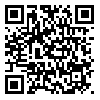BibTeX | RIS | EndNote | Medlars | ProCite | Reference Manager | RefWorks
Send citation to:
URL: http://journal.muq.ac.ir/article-1-409-fa.html

 ، مریم همتی1
، مریم همتی1 
 ، سعید کیال*
، سعید کیال* 
 2، احمدرضا شمشیری3
2، احمدرضا شمشیری3 

2- دانشگاه امیرکبیر ،
3- دانشگاه علوم پزشکی تهران
Background and Objectives: Evaluation has an important role in software development. Quality is considered in the evaluation of information systems, which depends on usability, availability, validity, compatibility, and response time. This research was performed with the aim of determining the usability of hospital information systems according to the 7 principles of isometric 9241, part 10.
Methods:This study was carried out as a descriptive cross-sectional study on a sample of hospital information systems' users in Education and Treatment Centers affiliated to Qom University of Medical Sciences. The standard questionnaire of isometric 9241, part 10, consisting of 75 questions was used to assess the usability of hospital information systems. In this questionnaire, 7 principles were assessed, including suitability for the tasks, self- descriptiveness, controllability, error tolerance, suitability for personalization, suitability for learning, and conformity with user’s expectations. Descriptive tests (mean, percentage, and frequency) were used for data analysis and evaluation of specified criteria.
Results:In this evaluation,the mean score of suitability for the task was 2.81 (the highest score), self-descriptiveness 2.51, controllability 2.63, conformity with user expectations 2.65, error tolerance 2.61, suitability for personalization 2.39 (the lowest score), and suitability for learning 2.70.
Conclusion:Regarding the results of this study and pervious researches, developers of hospital information systems in Iran should pay adequate attention to user’s needs when designing and developing the software.
دریافت: 1394/12/20 | پذیرش: 1394/12/20 | انتشار: 1394/12/20
| بازنشر اطلاعات | |
 |
این مقاله تحت شرایط Creative Commons Attribution-NonCommercial 4.0 International License قابل بازنشر است. |




